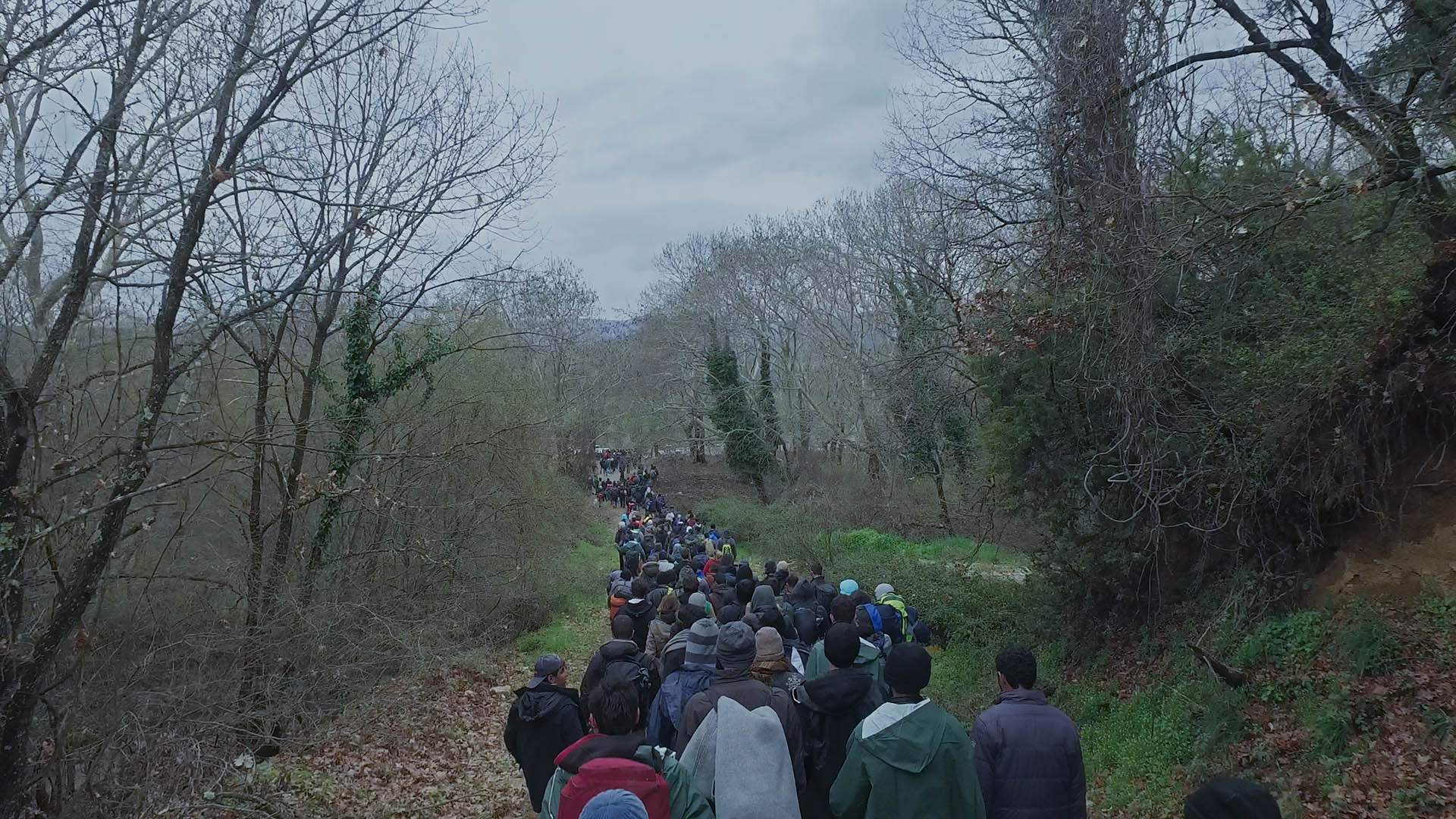Human Flow
Ai Weiwei explores the refugee crisis in a moving documentary that's mammoth yet intimate in both its scope and impact.
Overview
UPDATE, November 23, 2020: Human Flow is available to stream via Google Play, YouTube Movies and iTunes.

Like the renowned artist he is, Ai Weiwei opens Human Flow with a splash of painterly beauty, one of many that'll be seen over the course of the film's 140 minutes. An aerial shot of the sea fills the screen, its texture glistening, its colour shimmering, and a lone white seagull soaring over its scenic expanse. Even when the movie cuts to its next image — of a vessel filled with refugees powering through the gentle waves — it looks like something from a nature documentary. In a way, that's exactly what Human Flow is: a visually striking exploration of the planet's inhabitants migrating en masse across its surface.
Of course, the film is also much, much more than that. Ai has never been one to shy away from politics, and is presently exiled from his Chinese homeland as a result. Returning to a topic he has contemplated repeatedly across his particular blend of art and activism (as also seen in his studio in Lesbos, recent series of New York fences and the 60-metre-long inflatable boat now on display in Sydney), he doesn't hide the documentary's strong viewpoint on the subject at hand. Moving between more than 40 refugee camps in 23 countries in total — from Afghanistan and Israel to Germany and the US — Human Flow both depicts and denounces the reality experienced by the 65 million people currently considered displaced. As the movie informs the audience, that's a level last seen during the Second World War.
Interviews pop up throughout, flitting between experts, those trying to assist and a number of the displaced themselves. Lines from poets, writers and thinkers also frequently feature on-screen, speaking of humanity's overwhelming desire to simply be treated with dignity. Further slabs of text provide facts about and add context to the film's geographical segments, while a newsfeed intermittently scrolls across the bottom of the frame. Occasionally, Ai himself makes an appearance, chatting to refugees, bearing witness and trying to grapple with the enormity of the struggles before him. He helps people onto the shore from boats, and at one point swaps his own passport with a Syrian asylum seeker. At a wedding, he even dances.
As rousing and resonant as all of the above proves, it's the documentary's main imagery, and the cinematography that goes with it, that makes Human Flow such a stunning achievement. Some shots offer breathtaking bird's-eye views of the masses moving across different landscapes. Others are grainy, urgent and shot on mobile phones, immersing viewers in the daily existence of refugees everywhere. The juxtaposition tells its own story: about the ease of seeing things from afar versus the difficulties of truly diving into the details, and the vastness of the problem at hand versus the personal toll for those trying to find a better life. This film is clearly an emphatic condemnation of the refugee crisis. It's also one that knows that reading headlines is one thing, but that seeing it up close — on the ground, all around the world — is something else entirely.
The end result is a moving documentary that's mammoth yet intimate in both its scope and impact. Crucially, it's also heartfelt without overtly tugging at the heartstrings. Again, Ai is well aware that his observational, unhurried images (shot with the assistance of 11 other credited cinematographers) speak for themselves. Forget a picture just being worth a thousand words – Human Flow convincingly and compellingly advocates for millions of lives, for action in a world of apathy, and for not only the free movement of people in need, but the flow of humanity towards them.







